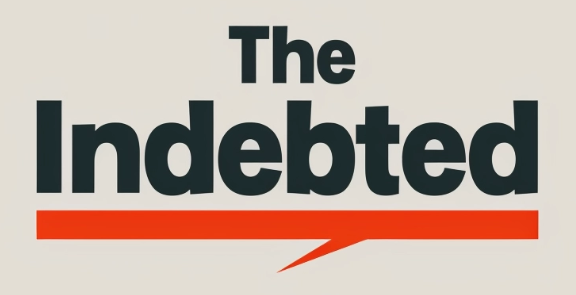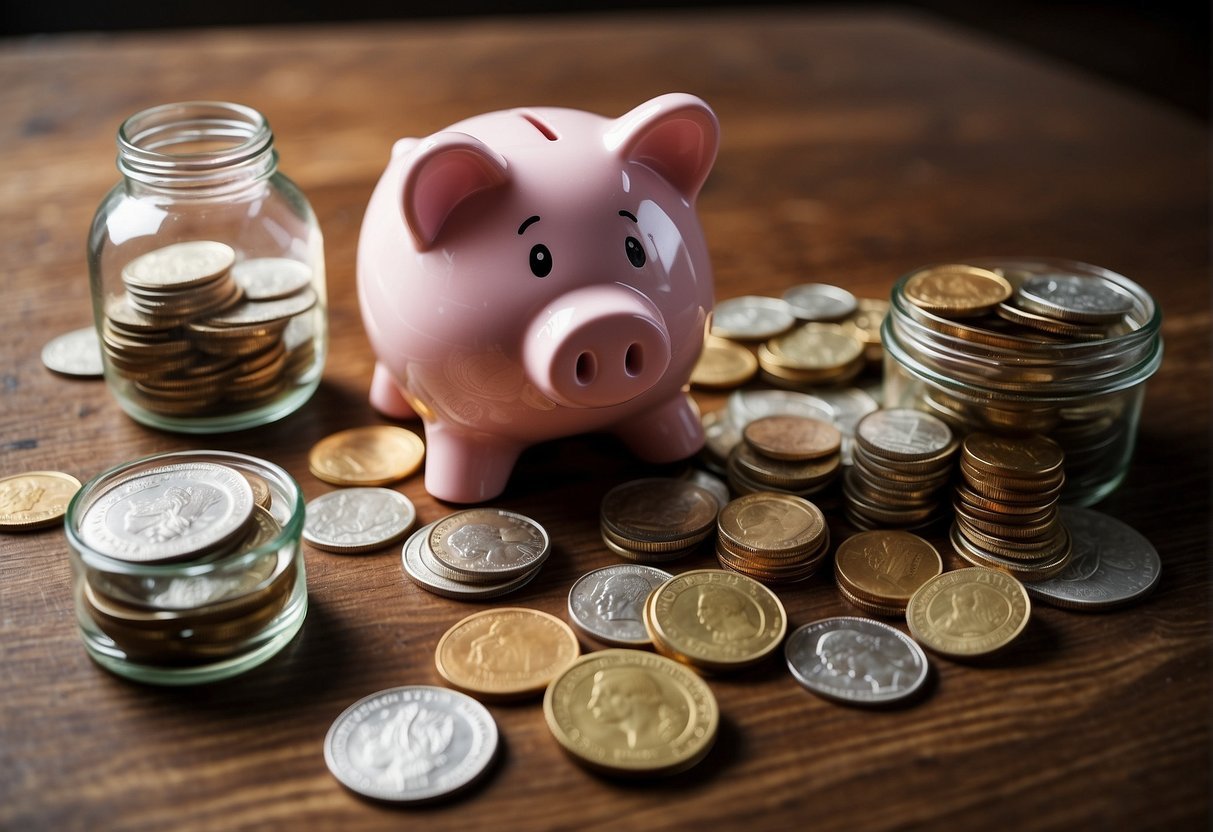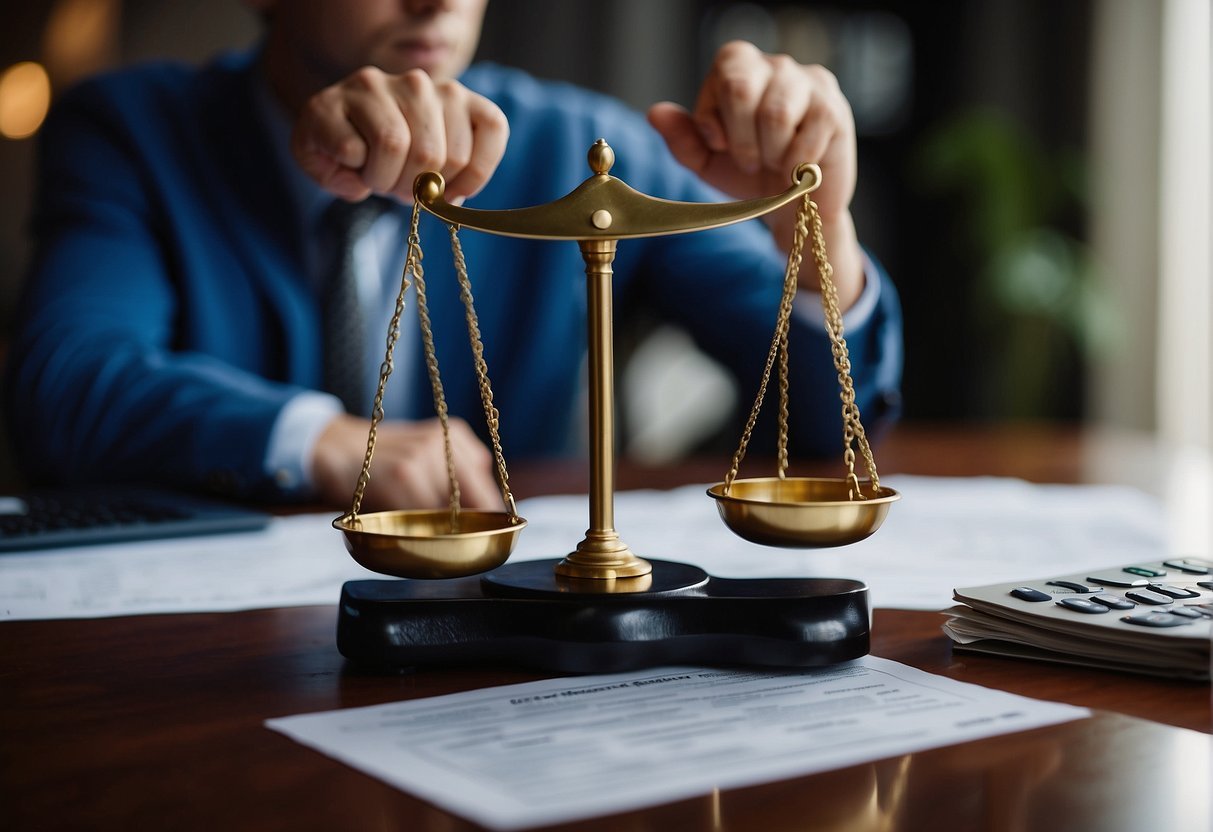Building an emergency fund is an essential part of achieving financial stability. However, if you’re in debt, it can be challenging to prioritize saving money when you’re already struggling to pay off what you owe. Many people believe that they should focus solely on paying off their debt before starting an emergency fund. While it’s essential to pay off debt, it’s also crucial to have an emergency fund in case of unexpected financial emergencies.
As someone who has been in debt and has built an emergency fund, I can tell you that it’s possible to do both simultaneously. It’s all about finding a balance that works for you. In this article, I’ll share my tips and tricks for building an emergency fund even when you’re in debt. I’ll cover why having an emergency fund is essential, how to start building one, and how to balance saving for emergencies while paying off debt. By the end of this article, you’ll have a clear understanding of how to prioritize your finances to achieve financial stability.
Understanding Your Financial Situation
Building an emergency fund might seem daunting if you’re in debt. However, you need to understand your financial situation to take the necessary steps towards building an emergency fund. Here are some steps to help you understand your financial situation:
Assessing Income and Expenses
The first step is to assess your income and expenses. This will help you understand how much money you have coming in and going out each month. To do this, create a budget that lists all of your monthly expenses and income. Be sure to include all sources of income, such as your salary, side hustles, or freelance work.
Identifying Essential and Non-Essential Expenses
Once you have a clear understanding of your income and expenses, it’s time to identify your essential and non-essential expenses. Essential expenses are those that you cannot live without, such as rent, utilities, groceries, and transportation. Non-essential expenses are things that you can do without, such as dining out, entertainment, and subscriptions.
It’s important to prioritize your essential expenses and make sure that they are covered before allocating any funds towards non-essential expenses. By doing this, you can ensure that you have enough money to cover your living expenses and still have some left over to put towards your emergency fund.
Creating a Budget for Savings
When building an emergency fund while in debt, creating a budget is crucial. A budget helps you track your expenses and income, and it gives you a clear picture of your cash flow. Here are some steps to create a budget:
Setting Realistic Savings Goals
Before creating a budget, it’s important to set realistic savings goals. According to Forbes Advisor, “a good rule of thumb is to save at least three to six months’ worth of living expenses.” However, this amount may not be feasible for everyone, especially those in debt. It’s important to set a savings goal that is realistic for your financial situation.
Allocating Funds for Emergency Savings
Once you have set a savings goal, it’s time to allocate funds for emergency savings. Start by looking at your monthly income and expenses. Identify areas where you can reduce spending, such as eating out less or canceling subscriptions you don’t use. Allocate the money you save toward your emergency fund.
It’s important to make emergency savings a priority in your budget. Consider automating your savings by setting up a direct deposit from your paycheck into your emergency fund. This ensures that you are consistently saving and not tempted to spend the money elsewhere.
Strategies for Reducing Debt
As someone who is building an emergency fund while in debt, it’s important to have a plan for reducing your debt. Here are a few strategies that can help you prioritize and consolidate your debt:
Prioritizing High-Interest Debt
If you have multiple debts, you need to prioritize which ones to pay off first. One effective method is to focus on paying off the debt with the highest interest rate first. This is because the longer you carry high-interest debt, the more money you end up paying in interest charges. By paying off high-interest debt first, you can save money in the long run and get out of debt faster.
Consolidating Loans and Credit Cards
Another strategy for reducing debt is to consolidate your loans and credit cards. This involves taking out a new loan or credit card with a lower interest rate and using it to pay off your existing debts. By consolidating your debt, you can simplify your payments and potentially save money on interest charges.
When consolidating your debt, make sure to look for a loan or credit card with a lower interest rate than your current debts. You should also be aware of any fees associated with the consolidation, such as balance transfer fees or origination fees.
Building Your Emergency Fund
As someone with debt, building an emergency fund might seem like an impossible task. However, it is crucial to have one to avoid falling further into debt when unexpected expenses arise. Here are some tips on how to build your emergency fund even when you’re in debt.
Choosing the Right Savings Account
Choosing the right savings account is key to building your emergency fund. Look for a savings account that offers a high interest rate, such as a high-yield savings account. These accounts offer higher interest rates than traditional savings accounts, which means your money will grow faster. Some high-yield savings accounts may require a minimum balance or have other restrictions, so be sure to read the terms and conditions carefully before opening an account.
Automating Your Savings
One of the best ways to build your emergency fund is to automate your savings. Set up a direct deposit from your paycheck to your savings account, so a portion of your income goes directly into your emergency fund. You can also set up automatic transfers from your checking account to your savings account on a regular basis, such as weekly or monthly. This way, you won’t even have to think about saving money – it will happen automatically.
Maintaining Financial Discipline
When building an emergency fund, it’s important to maintain financial discipline to ensure that you’re able to reach your savings goals. Here are some tips to help you stay on track:
Avoiding Unnecessary Expenses
One of the keys to maintaining financial discipline is to avoid unnecessary expenses. This means taking a hard look at your spending habits and identifying areas where you can cut back. For example, you might consider reducing your dining out budget or canceling subscriptions that you don’t use.
To help you identify areas where you can cut back, consider tracking your spending for a few weeks or months. This will give you a clear picture of where your money is going and allow you to make informed decisions about where to cut back.
Monitoring and Adjusting Your Budget
Another important aspect of maintaining financial discipline is monitoring and adjusting your budget. This means regularly reviewing your budget to ensure that you’re staying on track and making adjustments as needed.
For example, if you find that you’re consistently overspending in a particular category, you might need to adjust your budget to allow for more spending in that area. Alternatively, if you find that you’re consistently underspending in a particular category, you might be able to reallocate those funds to your emergency fund.
Monitoring and adjusting your budget regularly can help you meet your savings goals and build your emergency fund even when you’re in debt.
Building an emergency fund takes time and discipline. By avoiding unnecessary expenses and monitoring and adjusting your budget, you can stay on track and achieve your financial goals.





